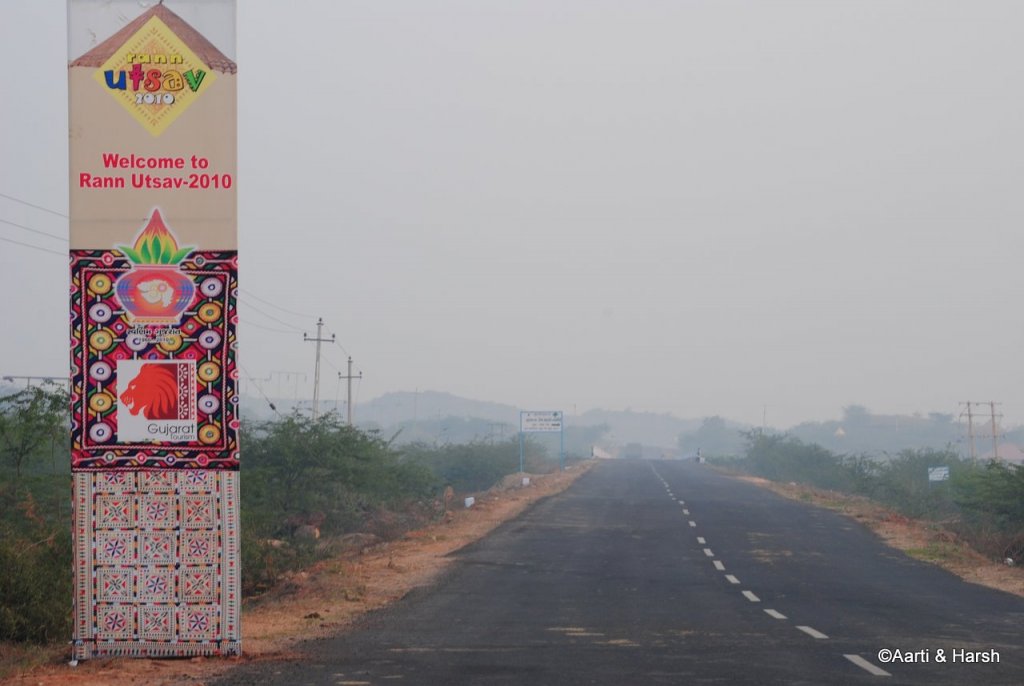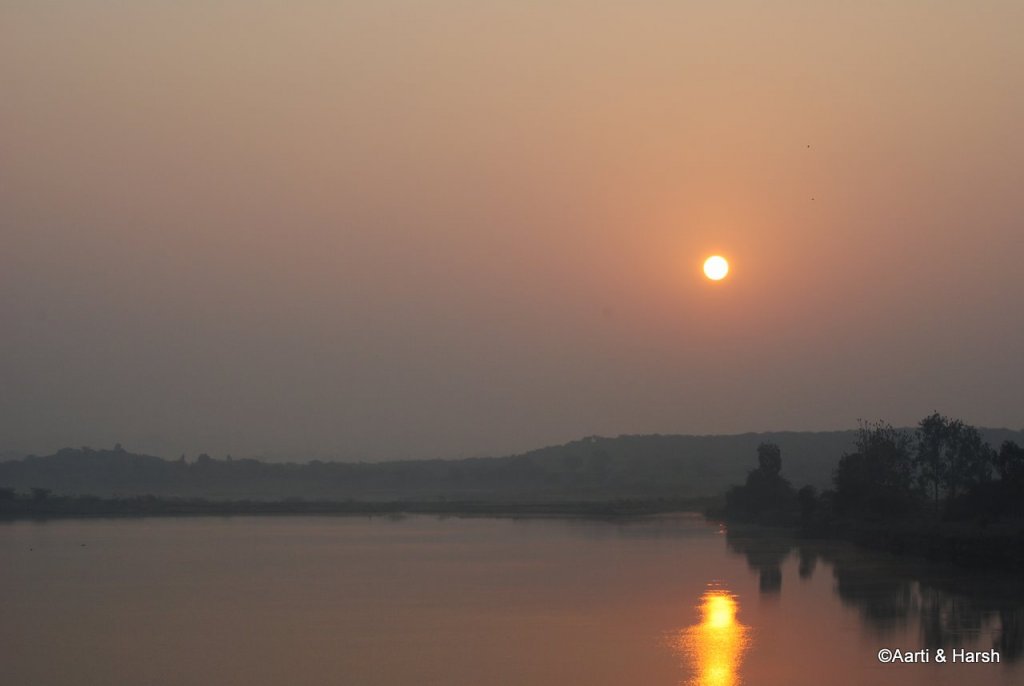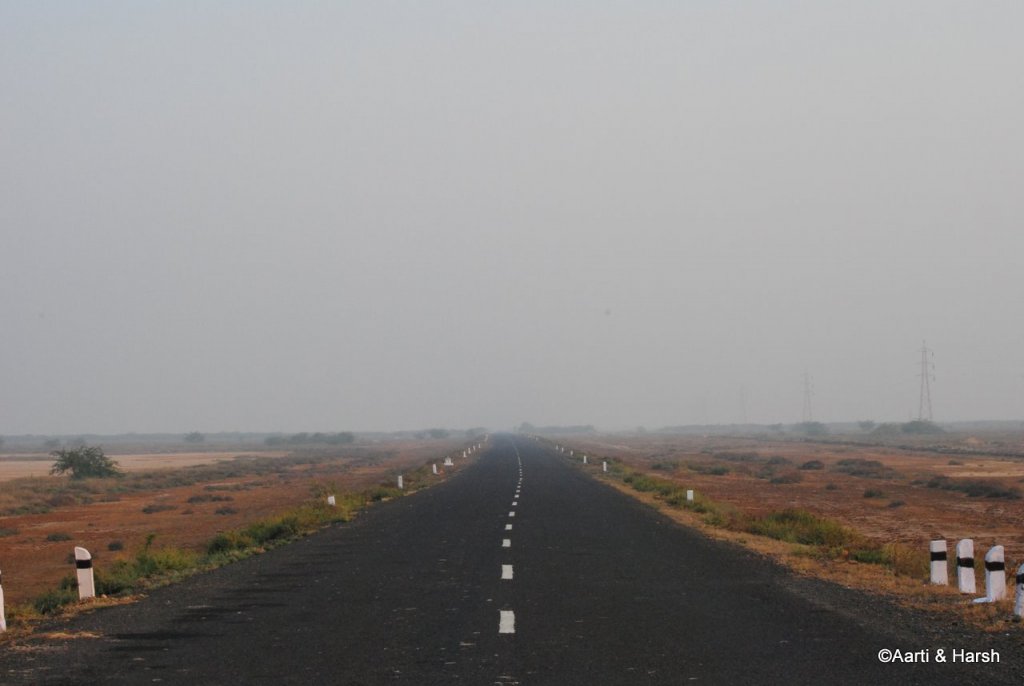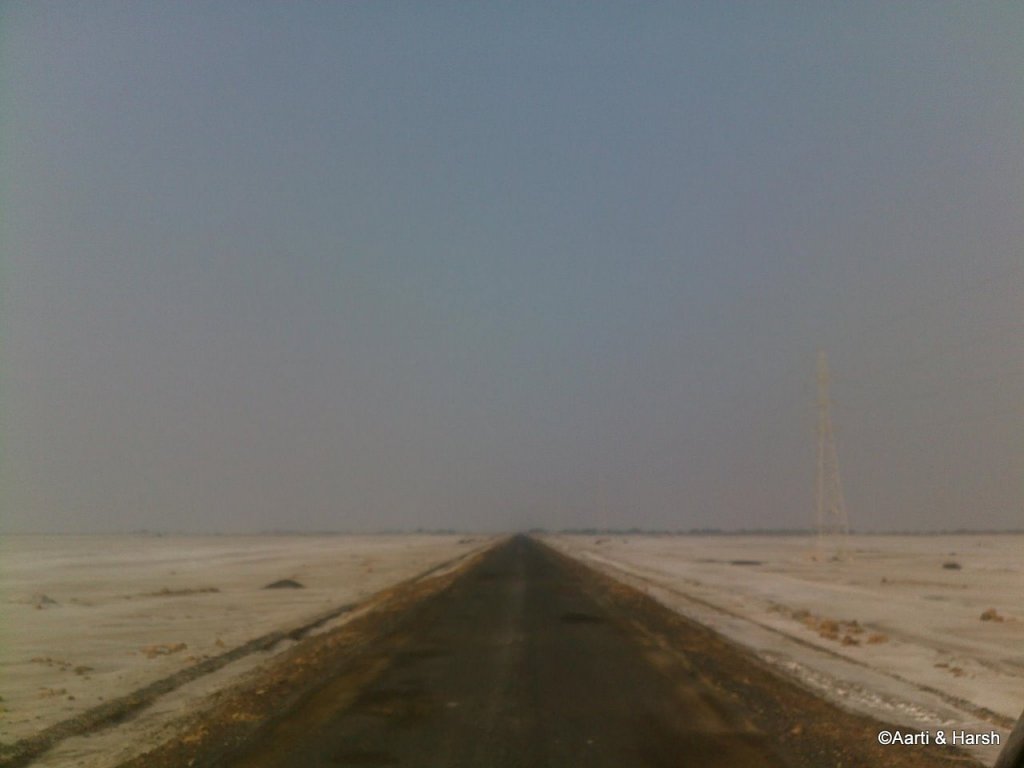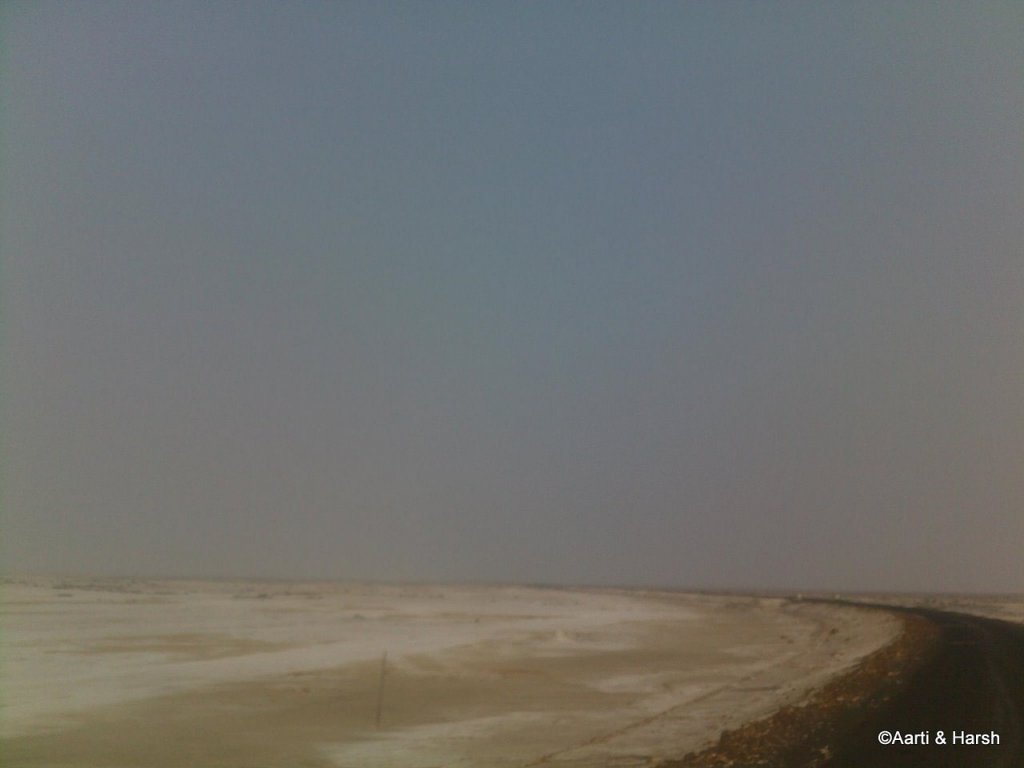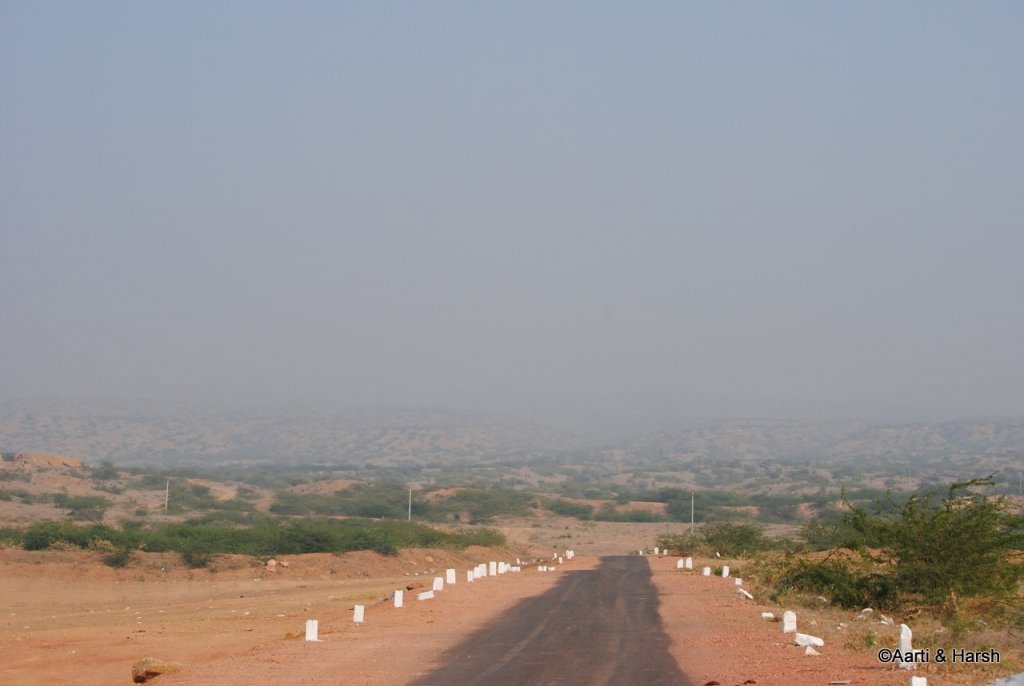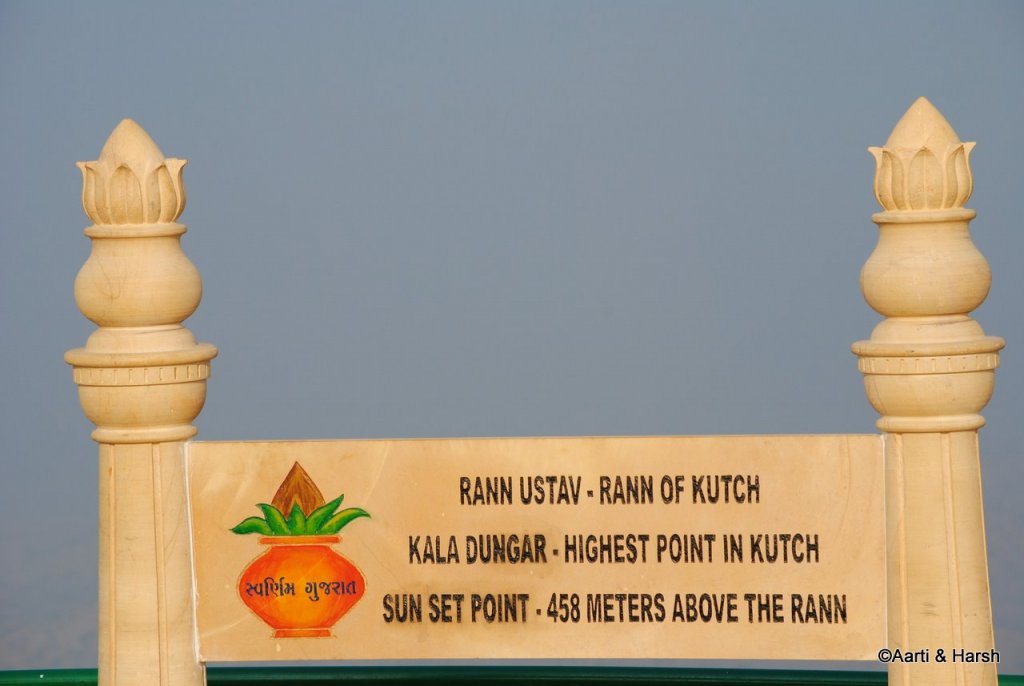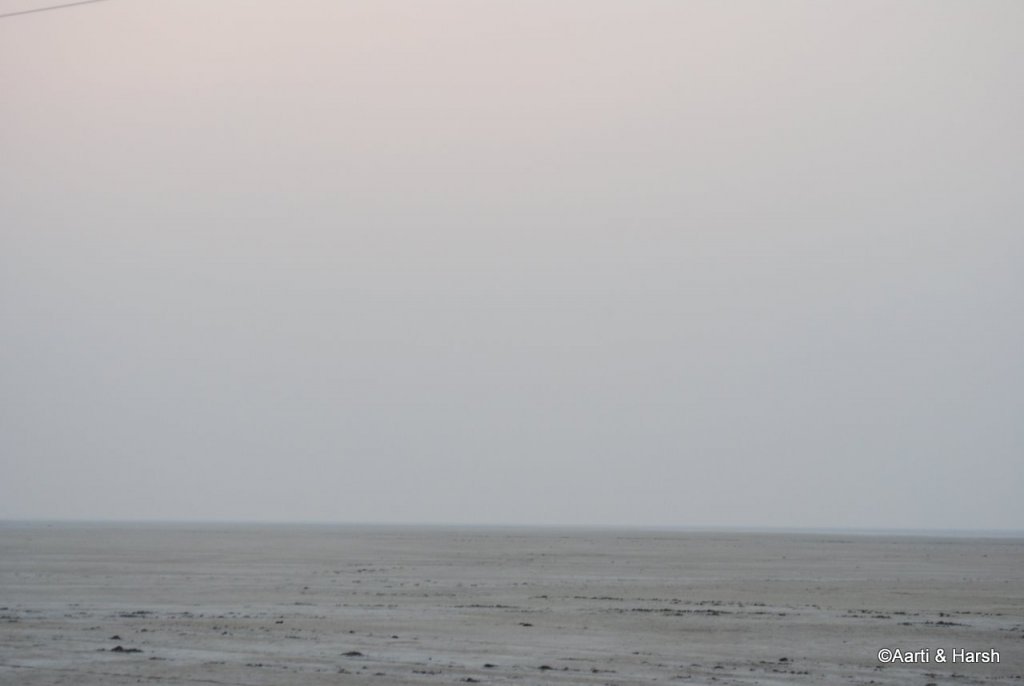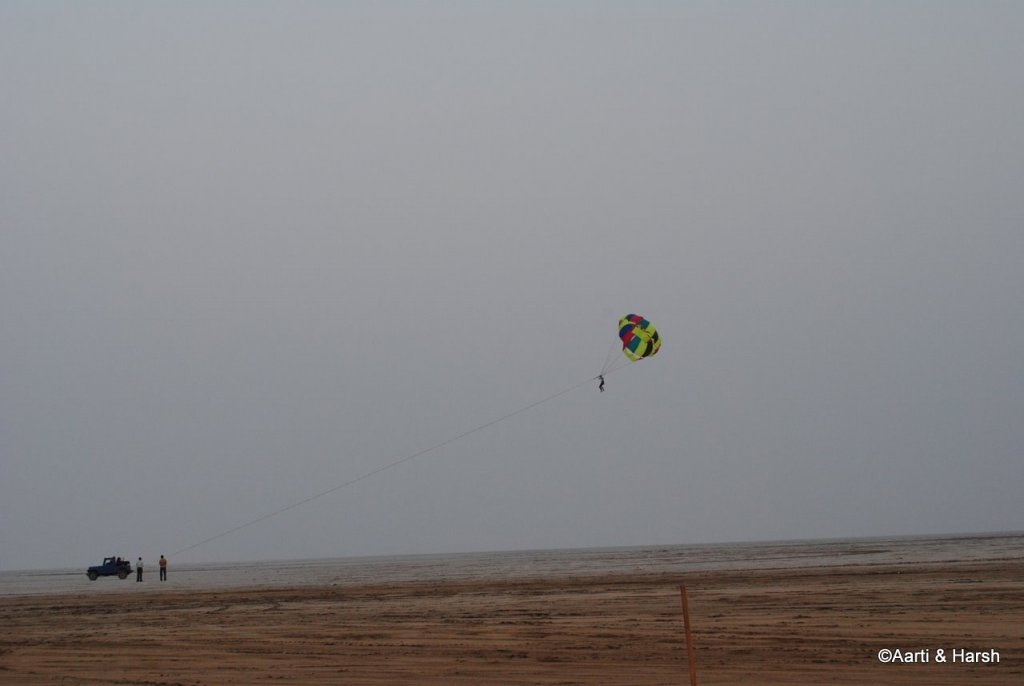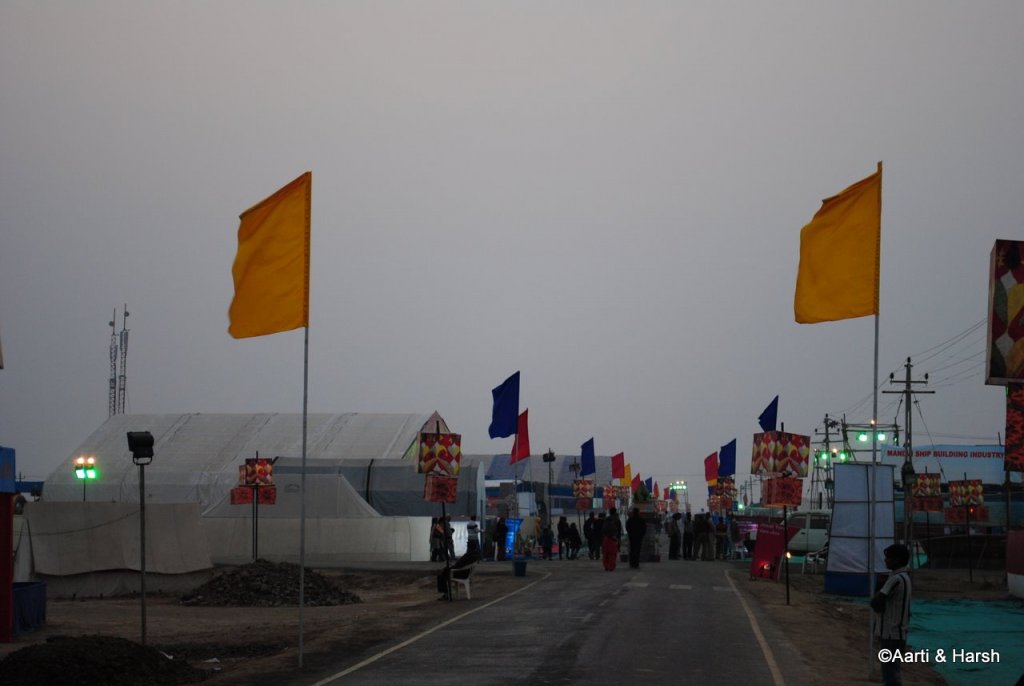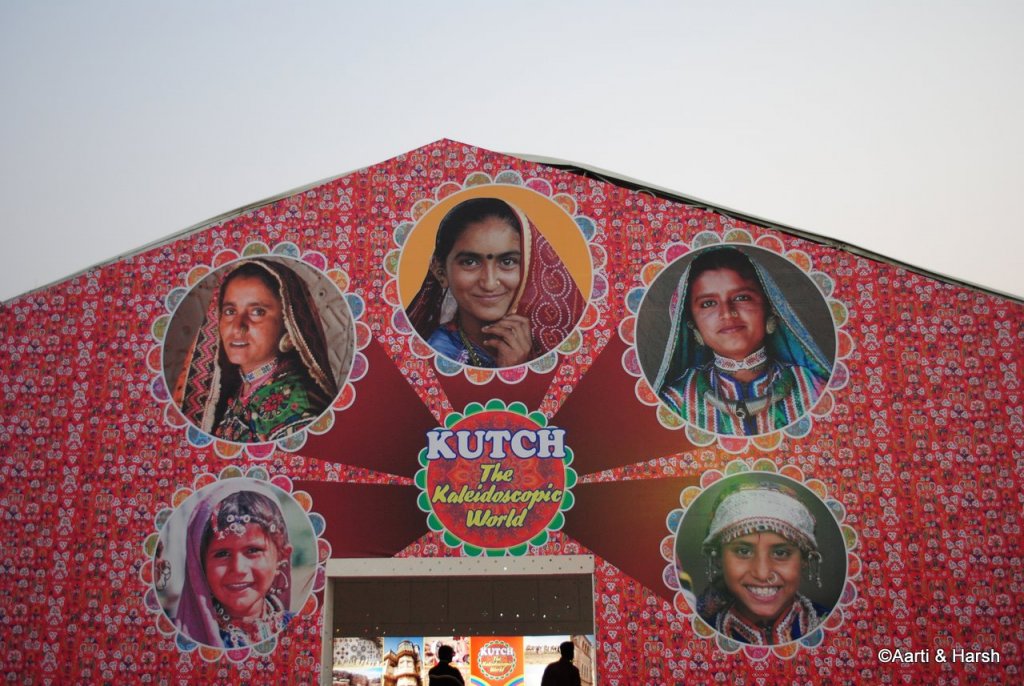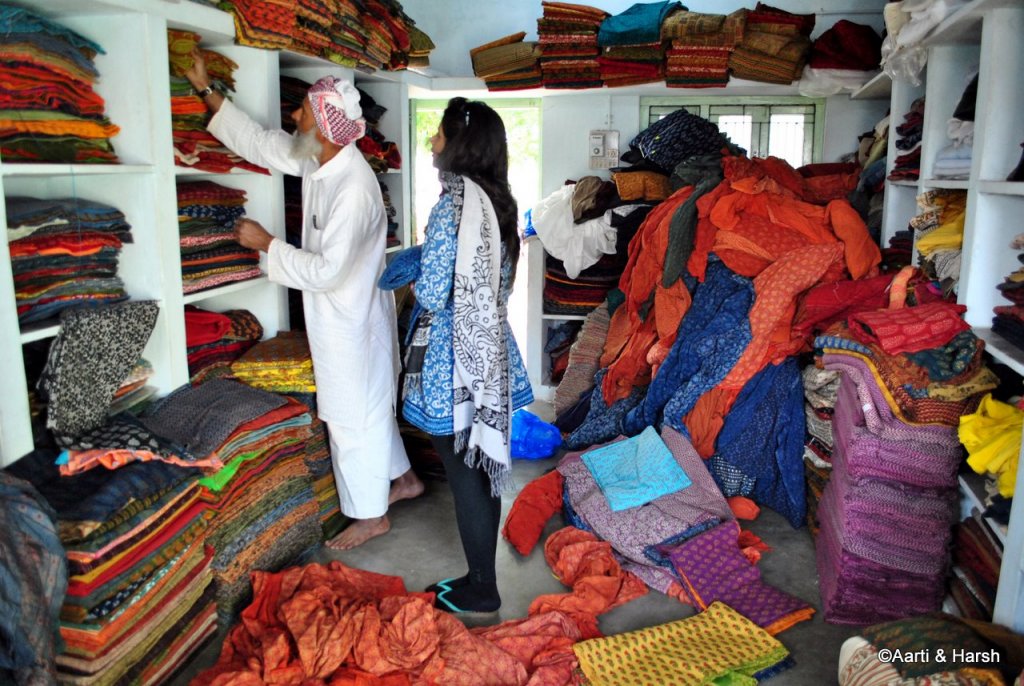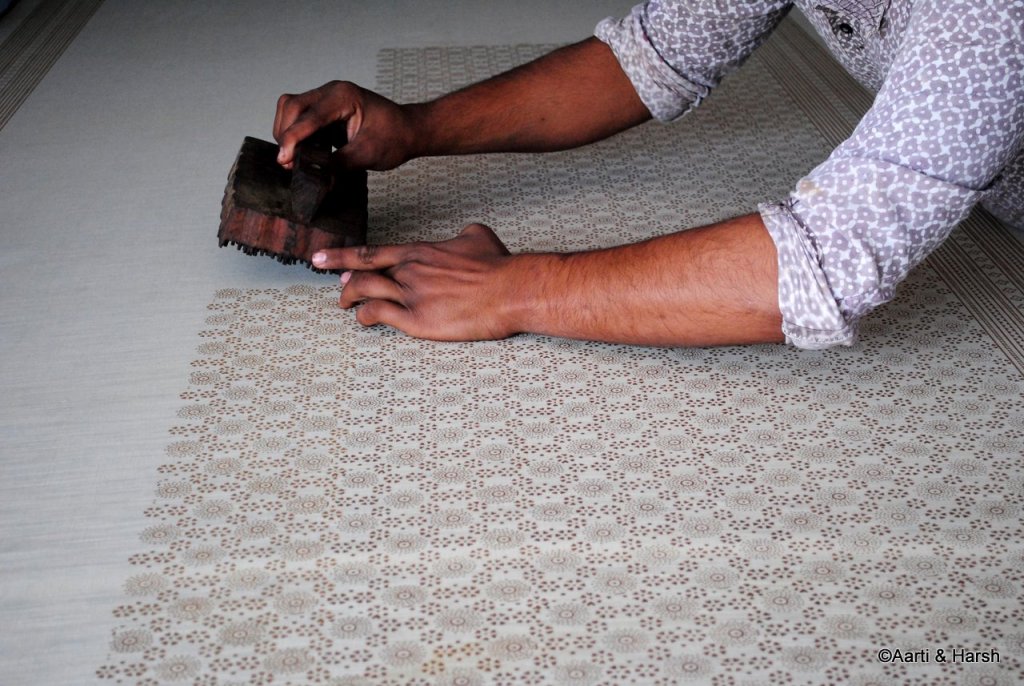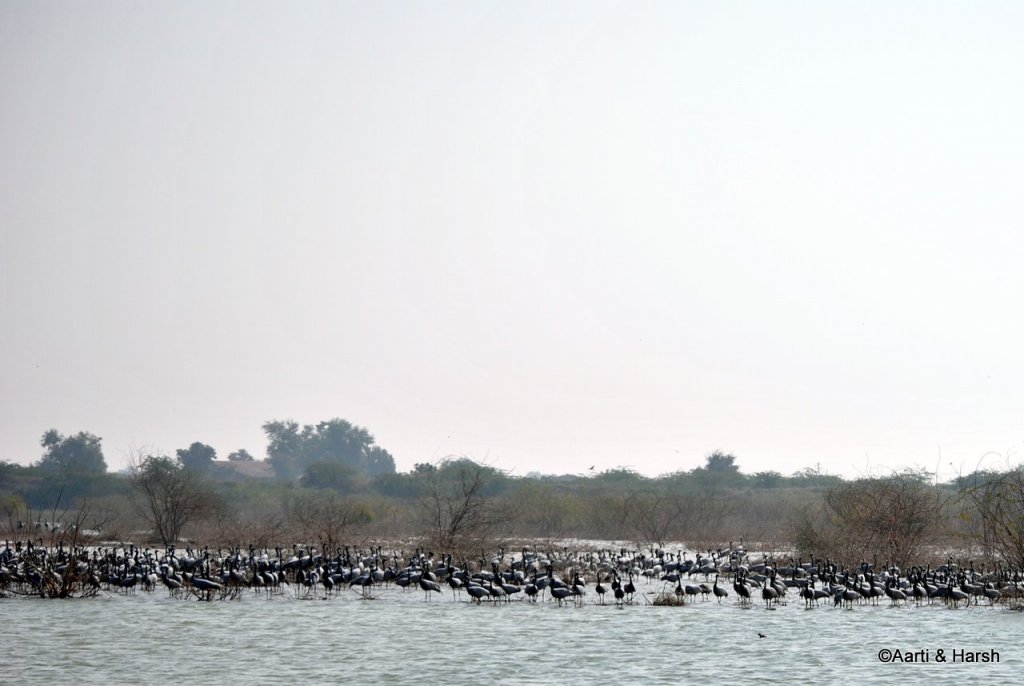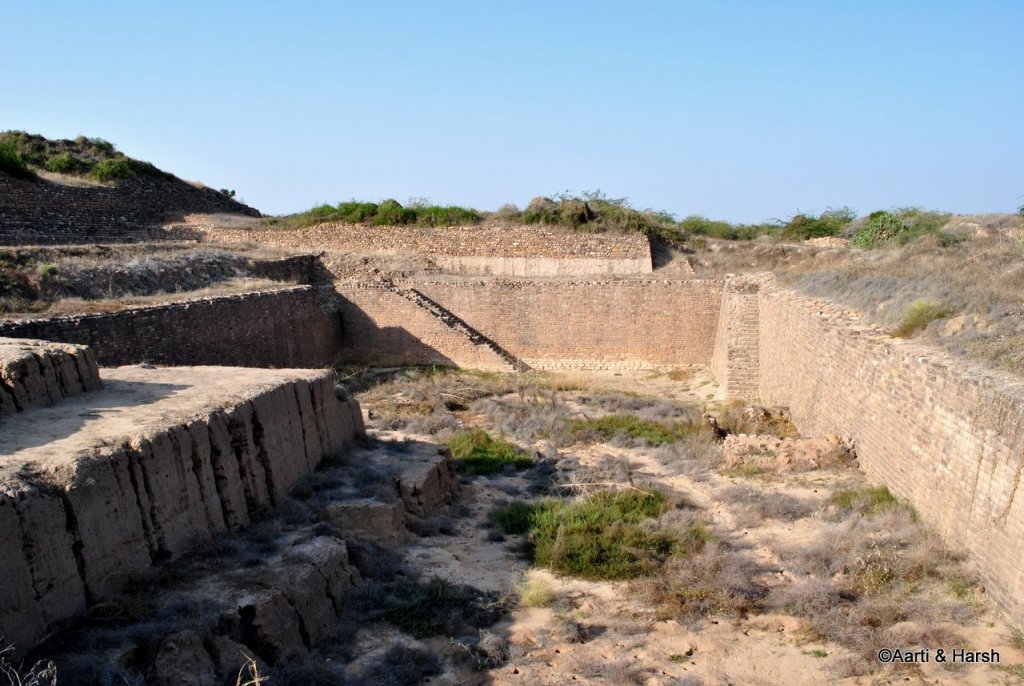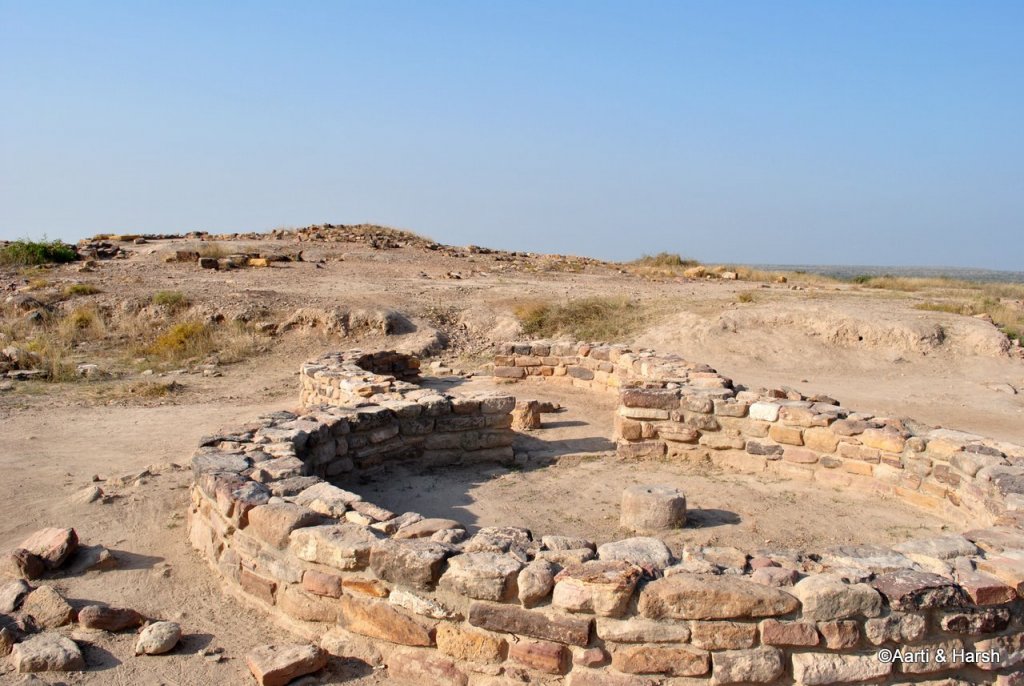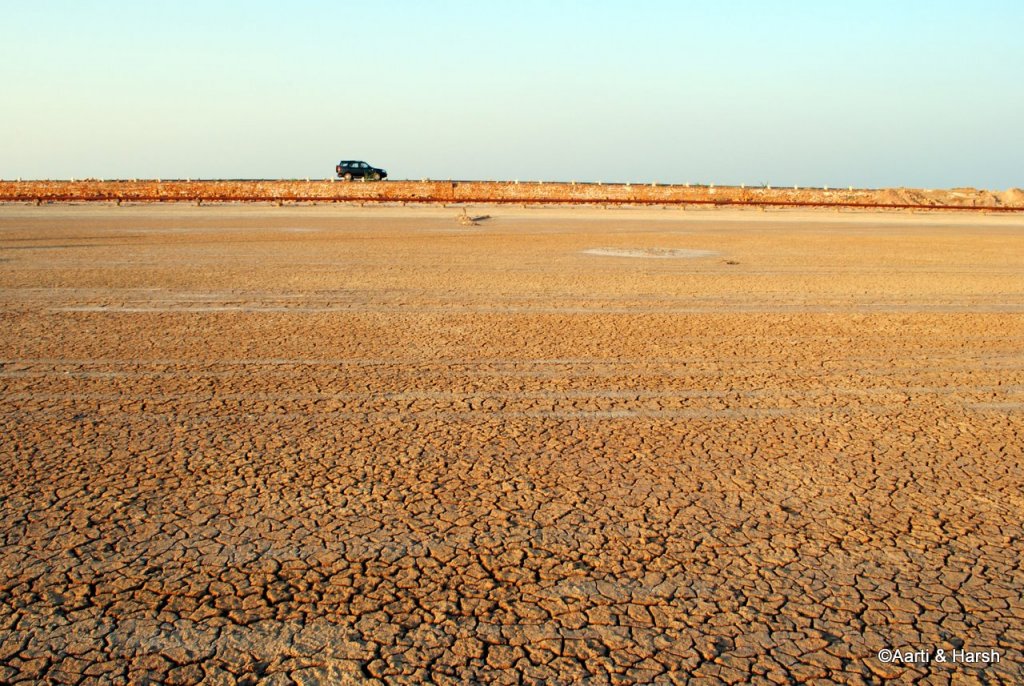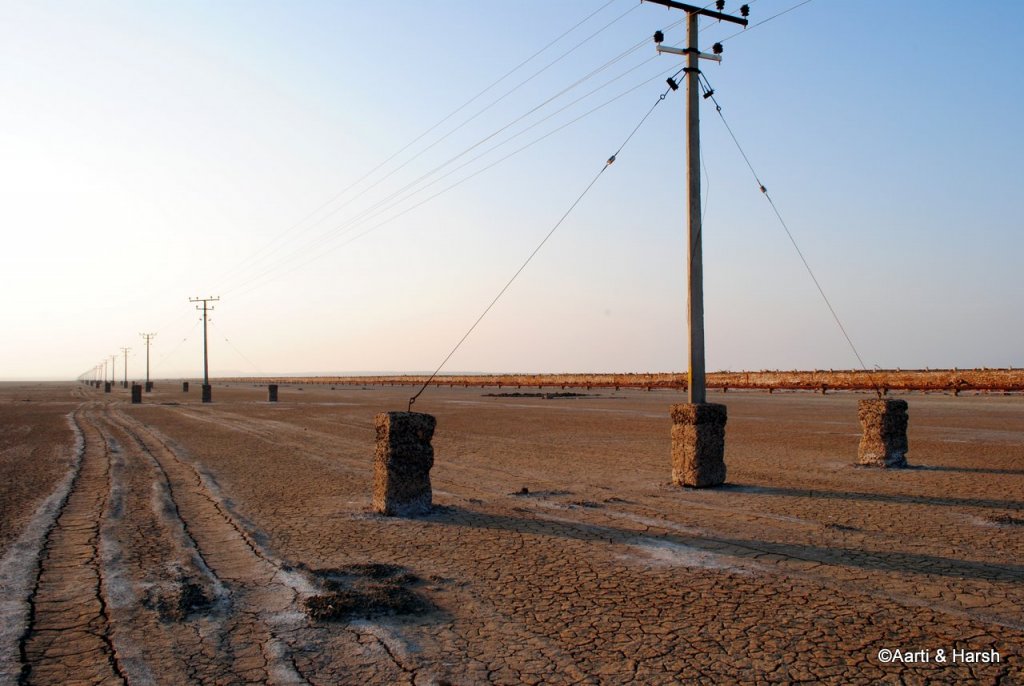This post is in continuation to a previous one and a part of my road trip to Gujarat travelogue. We arrived in Bhuj from Delhi via Little Rann of Kutch and explored the nearby areas of Lakhpat fort and Koteshwar in the first four days. On Day 5, after getting our permits, we traveled from Bhuj to Rann of Kutch, Kala Dungar, and also attended the Rann festival, details of which are covered in the article below.
To read the previous parts of the travelogue, please click on the links below.
- Day 1 & 2 – Delhi to Zainabad
- Day 3 – Zainabad to Little Rann of Kutch to Bhuj. Overnight Stay in Bhuj
- Day 4 – Delhi to Lakhpat Fort & Koteshwar
While early mornings in Delhi are a pain, the same does not seem bothersome at all when on a holiday. However, when I say this, I speak only for myself. For Aarti, it is the opposite. Hence, at home, she is responsible for waking me up on time, and during vacations, the onus for this falls on me.
So we began day 5 early again, and as the day before, left by 7:30 am with our breakfast of sandwiches packed. We’d liked the sandwiches so much the previous day that we decided to get them packed for lunch as well; since the spicy food generally available in Gujarat does not suit our stomachs.
Quick Navigation
Day 5: Bhuj to Rann of Kutch, Kala Dungar, Rann Festival (550km)
The road towards Khavda, 80 km from Bhuj, heads straight north. It is a two-landed highway, and although the tarmac was good, it was a bit bumpy, thus keeping our average speed below 80 kmph. En route, we saw a board advertising the much heard about Rann Utsav.
We’d heard of it before but did not know exactly what it meant. It turned out to be a fair and we decided to check it out later in the evening if we had the time.
The signpost advertising Rann Utsav
Sunrise on Rudramata Dam
The straight road from Bhuj to Khavda
A herd of wild camels at sunrise in the morning haze.
Khavda
Soon we reached Bhiyandiara, where one turns left for Hodka and Dhordo (where the Rann Utsav was being held). At Bhiyandiara, the Gujarat police had set up its office to issue permits to tourists venturing close to the border region. However, it was closed at the time when we reached.
As we reached Khavda, we realized that the sleepy village has little to boast of apart from an intersection lined with handicraft shops, and a mention in Keki Daruwalla’s famous love story ‘Love across the Salt Desert’. From Khavda, one can turn left towards Kala Dungar and India Bridge, while right leads to a village called Kandhwandh, the end of the road.
We took the road towards India Bridge. 8 km on this road is a cut for Kala Dungar, which we crossed and carried on towards India Bridge.
Also Read: How I traveled to Leh Ladakh by Public Transport
India Bridge
Upon reaching India Bridge, we were stopped, and after getting our permits checked and cameras deposited, we proceeded towards Vigakot border post. Slyly, we kept my mobile hidden and deposited everything else. This way at least we could record our GPS track in the Rann and maybe take a couple of non-sensitive shots.
Now a little piece of advice for those of you who like us would venture out towards Vigakot for the sheer excitement of off-roading in the Great white Rann over a long distance – don’t do it. It will be a huge disappointment. There is no way that one can drive on the Rann, as it is marshy almost throughout the year, barring the peak summer months of May and June.
The drive to Vigakot is a long haul of about 90 km from India Bridge, which goes north-west and is on a single-lane elevated tarmac, much like what is near Dholavira. Immediately after India Bridge, one crosses several ‘bets’ which are essentially islands in the white desert where a lot of the Army check-posts are located.
On the last such post, the road bifurcates, one heads towards Vigakot border post, and the other longer route moves to another border post in the northeast direction.
Vigakot
Nevertheless, the drive to Vigakot is beautiful. It of course would have been lovelier had we been able to drive on the Rann, but we enjoyed it all the same. Also, one mostly drives through ‘bets’ on the way to Vigakot, and the drive on the elevated road through the Rann is kept to a minimum; probably because of the difficulty of making roads on it.
While on the Rann stretch, all one can see is the horizon on either side, but there’s always an oasis coming up, shattering the myth of being in the middle of nowhere.
Drive through the Rann for 80 km
We did not shoot near the ‘bets’ fearing that someone might spot us with a mobile camera
A bend in the road
An hour and a half later, we finally reached the Vigakot power sub-station. There was no sign of any post, so we moved further. About a km ahead, we reached an empty check-post with a bifurcation on the road where I went to the BSF post to the right.
The Border
This we thought might be the Vigakot post but since there we no one there we moved ahead. Another km down the line we saw a fence and a T-junction where the tarmac went both left and right. Beyond the fence, there were some white pillars. It was then that it actually struck us that this fence separates our country from Pakistan!
It was a strange feeling standing there. We were looking at a different country across the fence, knowing that the land and the people there are much like us, were once a part of the same family and yet completely different now.
We were told by a Stallion standing near the fence to go back to the BSF post, which we immediately did. There, after a little scolding (for not stopping first at the post), we were given a ‘tour’ of the post, interspersed with interesting anecdotes. After chit-chatting a bit with the officers there, we started the long haul back to Khavda. This was pretty uninteresting and unexpectedly tiring, probably because it was too hot now with the sun up.
The long drive back on the same route. It was getting quite hot, and we had to switch on the AC.
We managed to get back to Khavda by 1:30 pm and were now a little tired. We stopped at the intersection to buy something to eat, and to ask for directions to Dholavira. The majority of the guys suggested going back to Bhuj and taking the longer route, but it was the shorter drive through the Rann that we were hoping to do.
Also Read: Nepal Bike Trip – Itinerary, Travelogue, Cost, Hotels
Greater Rann of Kutch
After unsuccessfully enquiring for a while about the road to Dholavira from Khavda through the Rann, and also being warned by one person on not attempting the route, we headed towards Kandhwandh. We were hoping that there would be a track east from there towards Dholavira through the Rann.
45 minutes later, we reached the village Kandhwandh. We spoke to a villager there about the possibility of a route ahead towards Dholavira. He was quite helpful and informed us that it is impossible to cross the Rann in any vehicle right now. But a direct route does exist to Dholavira. Even when the route is doable, it is tricky and can only be done in 4WDs.
It is generally possible to cross it in the summers when the snarling heat dries up the Rann. But even then he said that he gets messages from the BSF guys one in a while to tow out stuck vehicles using his tractor.
It was then that we finally realized that it would not be possible to do go to Dholavira that day. Still, we asked him to take us to the point where the Rann starts, and he obliged. As we reached the end of the dirt track, the sight before us was unbelievable!
The Rann was spread out in its entirety but completely covered in water. It was like a freaking lake! The little hope we’d had of still being able to do the route despite a very rational explanation by our villager friend now died. The only way of crossing this would be in a boat!
The blocked road to Dholavira
Kala Dungar
Dejected, we headed back to Khavda. It was already 3 pm, and to optimize we decided to head towards Bhiyandiyara to get the permit for Dhordo to attend the Rann Utsav later that evening, and then catch the sunset at Kala Dungar, meet the sweetened-rice-eating-jackals there, and then finally head towards Dhordo for a cultural evening at the Rann Utsav.
The permit at Bhiyandiyara took no time at all, and we were able to make it to Kala Dungar by 4 pm. En route, we were introduced to another magnetic hill, a sibling of the one up North, the magnetic hill of Ladakh.
Here again, the optical illusion almost convinced us of the magnetic effect of a hill nearby, but a simple experiment of flowing water brought us back to the logical explanation of an optical illusion.
On reaching Kala Dungar and treading up to the viewpoint from where the Rann can apparently be seen in all its glory, we were in for a big disappointment again. A thick haze had settled around the hills, and the Rann was not visible at all.
To add to the bad news, rumors were that the jackals had canceled their sweetened-rice-eating appointment for the evening after a heavy brunch earlier in the day. The saving grace was the purchase of a beautiful (and very reasonably priced) typical Gujarati wall hanging from the souvenir shop there which welcomes guests in our drawing room these days.
Approaching Kala Dungar
A hazed panorama from Kala Dungar
The sign explains it all
Rann Utsav
Having chucked our plan of waiting for the jackals, we headed to Dhordo next to check out the much-hyped Rann Utsav. We launched into a rally driving mode to catch the sunset over the white desert near Dhordo, only to miss it by 5 odd minutes eventually.
Also Read: Delhi to Bhutan Bike Trip – Ride of a Lifetime
However, we were soon absorbed in the carnival-like atmosphere of the Rann Utsav. A whole city had been erected for the Utsav. It boasted of tented accommodation for about 1000 people; huge pavilions for displaying the history and culture of Kachchh and Gujarat, and a fair to exhibit the local art and crafts.
Leave it to the Gujjus to sell, and they do a fantastic job of it; whether it be oil, pickles, or tourism. After a short stroll in the exhibition tents, we bought some souvenirs at the fair. Then we settled for a dinner of spicy, expensive vegetarian Gujarati buffet.
Missed the sunset over the Rann
Tourists jeep-gliding in the Rann
Rann Utsav
Entrance to the pavilion which showed the history and culture of Kachchh
Finally, with our stomach full and body exhausted, we headed back towards Bhuj and hit the sack at 11 pm after an exceptionally long day.
Day 6: Bhuj – Ajrakhpur – Rapar – Dholavira – Rapar – Bhuj (460km)
Having had a rather tiring day 5, we were not too keen to start early the next day. Hence, we could only leave the hotel around 9. The plan for the day was to visit Dholavira and come back. This itself would take the whole day since Dholavira is a good 250 km from Bhuj.
However, Aarti had been dying to see some artisans at work. She was also hoping to get some shopping done, so we decided to halt first at a village called ‘Ajrakhpur’. ‘Ajrakh’ or hand-block printing is a native craft of Kachchh. Earlier, the artisans practicing this craft were mostly found in village Dhamadka, some 50 km from Bhuj.
However, after the devastating earthquake in 2001, the village was almost entirely destroyed. The government rehabilitated the Ajrakh artisans to a new village, named ‘Ajrakhpur’ after their craft. This is about 10 km outside Bhuj on the Bhuj – Bhachau highway.
Also Read: Road Trip from Delhi to Kinnaur and Mussoorie
Ajrakhpur
As we entered the village, we stopped to ask someone about where to go to buy stuff. He immediately pointed us to the house of Mohd. Musa. Once we reached his house, Aarti’s eyes widened to unimaginable proportions and stayed that way for the next 1.5 hours till we left the village.
He had one room full of dress material, suit pieces, sarees, and what not! Everything was pretty and colorful, and Aarti had a hard time deciding what to NOT buy! Once she did decide, Musa offered to show us his workstation, and we gladly accepted.
It was indeed interesting to see the accuracy and speed with which Ajrakh artisans print material with hand blocks. Also all the different ‘natural dyes’ used, which Musa explained were made from all kinds of natural things like plants, spices, oils, etc were quite fascinating.
Indecision at its peak!
After a good look at the printing process and a nice photography session with the artisans, we decided that it was about time we left. Or we’d have to chuck our plan of going to Dholavira.
Also Read: Road Trip to Morni Hills and Tikkar Taal
Aarti of course could have settled there. Pulling her away was indeed equivalent to torture for her. Thankfully, once we left the village. Her eyes returned to normal size, and her excitement on crossing the Greater Rann while going to Dholavira returned in full force!
Amazing accuracy and hand stability and awesome patience!
Bhuj to Rann of Kutch
The left cut for Dholavira comes right after the Euro Multivision factory on the Bhuj – Bhachau highway. One then comes onto a narrow but smooth single-laned road.
Also Read: Delhi to Sach Pass Bike Ride – Dalhousie and Sach Pass
From here, we started following the route outlined in Outlook Traveller’s Driving Holidays. Because of this, we ended up taking a rather long route that went through several villages. We couldn’t find a place to stop for lunch. So we settled instead for chips and namkeen bought from a roadside shop.
Some birds at a lake en route Dholavira. Their numbers were huge. Too bad, the flamingos were so far away to shoot.
Finally, around 2:30 pm, we hit the stretch of road right before Dholavira that crosses the Greater Rann. Needless to say, it was breathtaking, and the urge to drive on the vast white Rann was almost overpowering.
Also Read: Road Trip to Madikeri – Boat Rafting in Madikeri
Aarti had decided already that she wanted to explore the Rann on foot. As soon as I parked on the side, she jumped off the car and headed straight for the Rann. She’d hardly gone 20 feet when she realized that the Rann was indeed very, very marshy. She came dancing back immediately, as is evident from the photograph below.
The soil was too marshy even to support a human being, imagine a car!
The “bridge” to Dholavira over the Rann. The great vast white Rann of Kutch
Dholavira
Since we could not explore the Rann on foot, we decided to move on, and take some shots on our way back. We reached Dholavira around 3:30 pm after spending several minutes searching for the Harappan excavation site. This we thought was quite strange, given that it is the largest excavation of the Harappan valley civilization in India.
We eventually came to the conclusion that the distance from Bhuj probably discourages people from visiting the place. Possibly when the road from Khavda to Dholavira is finally constructed, the place should be much better maintained.
Also Read: Bike Trip to Nandi Hills – Dawn At Hill’s Edge
After looking at the museum where artifacts were found from the excavation as well as the history was explained, the caretaker took us out to the excavation site. The elaborate water management system and the pots, seals, and jewelry of the Harappans left us amazed at the level of advancement of humans 5000 years ago!
A water harvesting mechanism at the site
A 5000 old house, the lease probably expired.
Rann of Kutch to Bhuj
We left Dholavira around 4:30 pm, and then stopped for some shots on the Greater Rann stretch. Carefully navigating the marshy land, we set up our tripod and took a couple of shots.
Also Read: Delhi to Lansdowne – A Weekend Drive
I also ventured out a bit to take some shots of the electricity poles. They seemed curiously majestic in the otherwise barren terrain. After spending a good half an hour enjoying the beauty of the Rann and taking photographs, we set off for Bhuj.
Kiyang on the “bridge” to Dholavira
The design of the base of these poles is amazing, it’s made to withstand the marsh during monsoon.
Footsteps in the parched land
A panorama of the Rann and the “bridge”
The return journey was tiring. But we were hell-bent on having a non-veg meal on our last evening in Bhuj. So went to Hotel Prince, right opposite our hotel, for dinner. Our Gujarat guide book had mentioned that it served non-veg fare as well. After an okay meal of fish and chicken, we literally dropped dead in our hotel.
- Journey Ahead: Bhuj to Udaipur to Delhi – End of Trip
This concluded Day 6 of our journey from Bhuj to Rann of Kutch and the villages nearby. The next day, we were all set to return to Delhi while covering Udaipur on the way.
Bhuj to Rann of Kutch – Conclusion
I hope the travelogue, pictures, and information above on traveling from Bhuj to Rann of Kutch and other areas were of help. Please click on the link above to read the next part of the travelogue. If you have any questions or need any other details, please feel free to ask in the comments section below or at our Community Forum, and I will be glad to answer.


